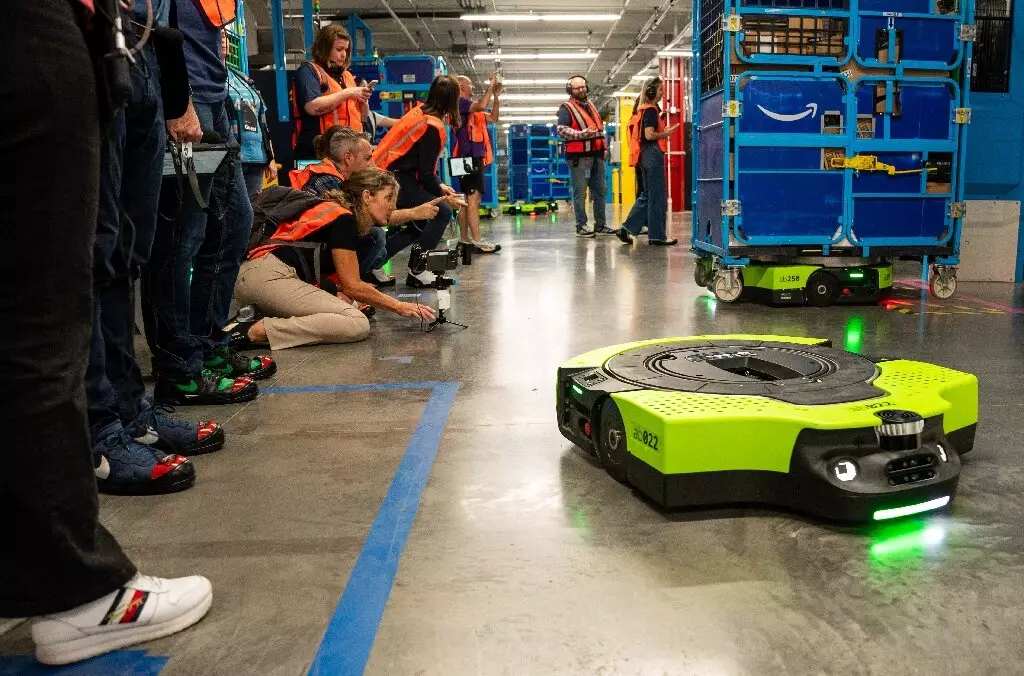Amazon is not merely an e-commerce giant; it is a multifaceted entity seeking to infiltrate every aspect of consumer life. Recent innovations reveal the company’s unwavering commitment to refining its logistics and delivery systems, enhancing overall efficiency. One highlight is the new delivery van computer system aimed at streamlining the route mapping process. This sophisticated technology allows delivery drivers to identify stops and select packages for drop-off with remarkable accuracy. Doug Herrington, head of Amazon Stores, underscores the potential gains from these innovations, declaring that quicker deliveries will correlate directly with increased consumer spending on the platform.
The drive to achieve the fastest Prime delivery speeds globally in 2024 stands as a testament to Amazon’s obsessive focus on logistics. This efficiency is not merely an operational goal; it is at the heart of Amazon’s flywheel effect, stimulating member engagement with its subscription service. Indeed, last year saw the company reduce shipping costs by 45 cents per unit, a significant achievement when placed into the context of its staggering sales volumes. With a profit exceeding $30 billion in a year that also showcased revenue nearing $575 billion, Amazon’s operational strategy seems to balance profitability with aggressive reinvestment into its logistics infrastructure.
Controversies in the Shadows
However, this relentless pursuit of operational dominance and market efficiency has not come without consequences. Amazon’s business practices have caught the attention of federal regulators, who have initiated a lawsuit against the company. Accusations of monopolistic behavior have surfaced, centering on claims that Amazon’s scale and market strategies hinder competition rather than fostering it. As analysts like Suzy Davidkhanian point out, the insights gleaned from consumer data not only bolster Amazon’s advertising revenues but form the backbone of its product recommendations—an intricate web of influence that keeps users entrenched within its ecosystem.
Furthermore, the company’s foray into media rights—most notably, its acquisition of NFL streaming rights—demonstrates a calculated approach to attract and retain niche consumer bases, notably sports fans. Such moves illustrate how Amazon leverages its understanding of market dynamics and consumer preferences to enhance customer loyalty and engagement across its services, highlighting a strategic blend of content, commerce, and consumer insight.
What is perhaps one of Amazon’s most ambitious expansions lies in the healthcare sector. The introduction of the One Medical service, available for just $9 a month for Prime members, offers unprecedented access to healthcare services via telemedicine. This initiative could redefine consumer engagement with health services by integrating medical consultations, insurance mechanisms, and pharmaceutical delivery into Amazon’s existing logistical framework. With goals of expedited prescription delivery—aiming for 45% of customers to receive their medications within 24 hours—Amazon is carving a significant niche in a sector ripe for disruption.
Furthermore, with advances in smart technology, like an app-based pharmacy service, Amazon is positioning itself as a central player in not just retail but also in personal healthcare management. Analysts predict that this sector holds vast potential for revenue generation, as Amazon aims to cultivate a “one-stop-shop” model that encompasses virtually every consumer need.
As Amazon navigates the uncertain waters of brick-and-mortar retail, it remains undeterred, unveiling plans for a fully automated micro-warehouse model beside its Whole Foods locations. This initiative demonstrates a clear shift toward integrating its online and offline operations, allowing consumers to enjoy the convenience of online purchasing while facilitating instant access to groceries. Additionally, the deployment of robotics in logistics centers, while simultaneously enhancing safety protocols, illustrates Amazon’s forward-thinking approach to workforce management. However, it’s essential to note that increased automation raises concerns regarding workplace safety and employee wellbeing—a topic that critics have highlighted amid reports of pressure within Amazon’s warehouses to meet delivery quotas.
Moreover, innovations in artificial intelligence are set to further personalize the shopping experience on Amazon’s platform, ensuring a seamless transition from product research to purchase. Adaptive product labels and tailored marketing strategies leverage AI to cater to individual preferences, solidifying Amazon’s position as a leader in the e-commerce space.
Amazon encapsulates a vast and complex ecosystem dedicated to redefining retail, logistics, entertainment, and healthcare. As it continues to thread these diverse sectors together through technology and strategic innovation, the ramifications—both positive and negative—on competition and consumer welfare will be closely scrutinized. As the company links its past successes to future ambitions, the discourse surrounding its ethical and competitive landscape will undoubtedly intensify. While Amazon aims for a future where it becomes an integral part of everyday consumer life, the implications of its expansive reach will challenge business norms and regulatory frameworks.

